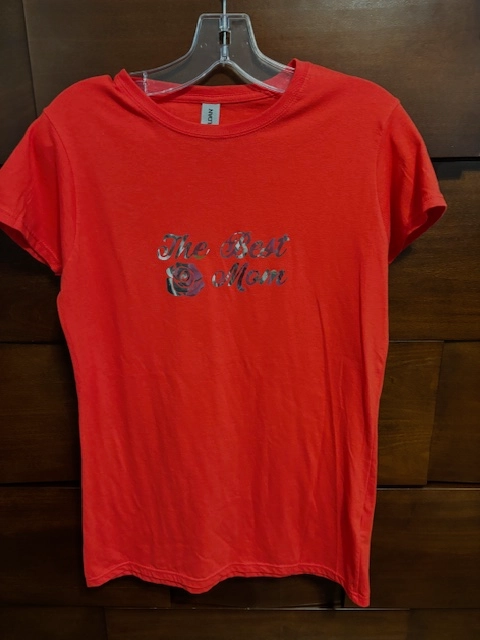Personalized School Uniforms with High-Quality Embroidery Solutions
Personalized School Uniforms with High-Quality Embroidery Solutions
Blog Article
The Art of Customized Embroidery: Unlocking the Keys to Creating One-of-a-kind and Remarkable Designs
Embroidery, a craft steeped in tradition and creativity, holds within its intricate stitches the power to transform fabric into a canvas of one-of-a-kind expression. The secrets to developing customized needlework layouts that captivate the eye and leave a long-term impact lie in a delicate balance of method, creative thinking, and focus to detail. As we look into the globe of personalized embroidery, we uncover the nuanced interplay between thread option, sew intricacy, and style customization that raises a plain garment to a work of art. Join us on a journey via the art of personalized needlework as we decipher the secrets behind crafting genuinely unforgettable and distinct creations.
Selecting the Right Embroidery Threads
When picking needlework threads, what vital aspects should you think about to make sure the very best outcomes for your custom designs? The option of needlework thread is important in figuring out the final outcome of your embroidered layout. Among the primary considerations is the product of the string. Various materials such as cotton, polyester, rayon, and silk provide varying degrees of shine, toughness, and texture. It is important to choose a thread material that matches the textile you are stitching on and aligns with the wanted look of the layout.
Thicker threads can include dimension and structure to your style, while finer threads are optimal for elaborate details and tiny message. In addition, taking into consideration the color fastness and washability of the thread is essential to make sure that your custom layouts keep their quality and vibrancy over time.
Checking Out Different Stitch Strategies
To explore the realm of 'Exploring Various Stitch Methods', one must understand the details and nuances that each sewing method brings to the art of embroidery. Different stitch methods not just add aesthetic rate of interest but additionally contribute to the total texture and dimension of the style. One preferred stitch strategy is the satin stitch, which involves carefully stuffed parallel stitches to produce a smooth and glossy surface, perfect for filling out forms and creating strong lays out.
On the other hand, the backstitch is a functional method frequently made use of for laying out and including great information. It includes sewing in reverse to create a solid line of embroidery. In addition, the French knot stitch adds a responsive aspect to designs, excellent for developing distinctive accents like flower centers or ornamental touches.
Checking out various stitch techniques permits embroiderers to play with light, shadow, and depth within their layouts, raising the visual charm and creative high quality of their needlework jobs. By grasping numerous stitching approaches, one can open countless opportunities for developing distinct and remarkable customized needlework items.
Incorporating Personalized Layout Components
Having discovered the complexities of different stitch techniques such as the satin stitch, backstitch, and French knot, the focus now shifts towards incorporating tailored style aspects in personalized needlework projects. Customized style components play a vital duty in making embroidery projects absolutely distinct and remarkable.
An additional means to include individualized layout aspects is by consisting of icons or concepts that hold special definition to the recipient or show their rate of interests and individuality. Integrating a favorite blossom, animal, or hobby-related sign can make the needlework design more meaningful and personalized. In addition, selecting shades that reverberate with the recipient or straighten with the designated theme can even more enhance the personalization of the embroidery job.
Mastering the Art of Shade Sychronisation
One trick element of shade control is comprehending color theory. This consists of understanding just how different shades engage with each various other, the emotions they share, and how they can be integrated to produce visually attractive layouts. By using color theory concepts, embroiderers can develop unified color combinations that enhance the general appearance of the style.
Additionally, taking notice of contrast is essential in shade control. Making use of contrasting shades can aid particular aspects of the layout pop, improve readability, and produce a visually dynamic needlework piece. By mastering the art of shade control, embroiderers can boost their designs and create memorable items that reverberate with clients and viewers alike.
Enhancing Texture With Advanced Embroidery Stitches

French knots, for instance, are excellent for including small, elevated dots to your design, resembling the look of beads or creating a textured surface area. Bullion knots, on the other hand, can be used to develop twisted, ropelike components that add a glamorous feel to the needlework. Seed stitching entails tiny, scattered stitches that can fill in locations with a multicolor structure, while turkey work develops cosy, dimensional accents similar to pet hair or foliage. Exploring with these sophisticated needlework stitches enables you to push the borders of traditional embroidery and develop genuinely special and visually appealing appearances in your styles.
Conclusion
To conclude, the art of personalized embroidery entails a mix of selecting the best threads, exploring numerous stitch methods, including personalized style components, grasping color control, and improving structure with sophisticated stitches. By recognizing and applying these crucial elements, embroiderers can develop one-of-a-kind and unforgettable layouts that display their creativity and ability. Embroidery enthusiasts can open the tricks to developing gorgeous and custom items that stand out and leave an enduring impression.
Report this page